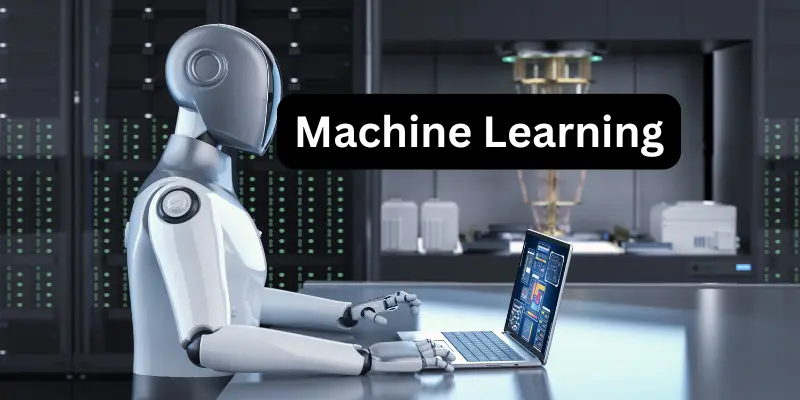The Role of Machine Learning in Personalized Education
Updated: 05 May 2025
103
Education is not one-size-fits-all. Every student learns at a different pace, has different strengths, and faces different challenges. That’s where personalized education comes in — and machine learning is making it better than ever.
By using data and smart algorithms, machine learning helps tailor lessons, recommend study materials, and track student progress in real time.
In this blog post, we’ll explore how machine learning is playing a key role in shaping personalized education. We’ll also look at real examples, benefits, and what it means for the future of learning.
What Is Machine Learning?
Machine learning (ML) is a type of artificial intelligence (AI). It allows computers to learn from data and make decisions without being directly programmed. In simple terms, it means the system can improve over time as it processes more information.

Example:
When you watch shows on Netflix, it suggests new content based on what you’ve watched before. That’s machine learning at work.
In education, ML works the same way. It looks at how students learn, what they struggle with, and what keeps them engaged. Then, it uses that data to suggest what and how they should learn next.
Read More: How AI is shaping the Future of Smart Learning
What Is Personalized Education?
Personalized education is an approach where lessons, assignments, and support are tailored to each student’s needs. Instead of teaching the same thing to everyone in the same way, it adjusts content based on individual learning styles and performance.
Key features of personalized education:
- Students learn at their own pace
- Lessons match their skill levels and interests
- Feedback is more targeted and timely
- Encourages self-guided and active learning
How Machine Learning Enables Personalization
Machine learning supports personalized education in several powerful ways:
1. Adapting Content to Student Needs
ML algorithms analyze student performance and adjust content in real time.
- If a student is struggling with math, the system suggests easier problems or extra videos.
- If a student excels in reading, it offers more advanced materials.
2. Smart Recommendations
Just like YouTube or Spotify recommends what you might like, educational platforms use ML to suggest:
- Practice exercises
- Study guides
- Interactive games
- Revision plans based on past scores
3. Real-Time Feedback and Assessment
Instead of waiting for test results, ML gives instant feedback.
- Highlights weak areas
- Suggests what to study next
- Helps teachers track progress without manual grading
4. Learning Style Detection
Some students are visual learners. Others prefer audio or hands-on tasks.
ML tools can detect learning patterns and adapt lessons accordingly.
- Visual learners may get charts or animations
- Auditory learners may get podcasts or narrations
Real-World Tools Using Machine Learning in Education
Several platforms already use machine learning to personalize education:
- Khan Academy: Uses student progress data to suggest tailored lessons.
- Duolingo: Tracks language learning habits and adjusts difficulty.
- Coursera and edX: Recommend courses and topics based on your learning history.
- DreamBox Learning (Math): Adapts in real-time to a child’s responses and learning style.
- Google Classroom (with add-ons): Uses AI-based tools for grading, feedback, and recommendations.
These tools show how machine learning can take the pressure off both students and teachers by delivering exactly what the learner needs.
Benefits for Students
- Personal Pace: Students can slow down or move ahead depending on their comfort level.
- Better Confidence: When tasks are aligned with abilities, students feel more successful and motivated.
- Instant Help: With real-time suggestions, students don’t have to wait for a teacher to assist.
- More Enjoyable Learning: Lessons that match interests and learning styles are more engaging.
Benefits for Teachers
- Smarter Grading: ML can auto-grade quizzes, analyze essays, and give feedback.
- Focus on Teaching: With less time spent on repetitive tasks, teachers can spend more time helping students one-on-one.
- Early Warnings: Algorithms can flag students who are falling behind or losing interest, so teachers can step in early.
- Data-Driven Decisions: Teachers can make better choices using insights from ML reports.
Challenges of Using Machine Learning in Education
While the benefits are clear, there are also some challenges:
- Data Privacy: Student data must be protected. Schools must use trusted platforms.
- Access to Technology: Not all students have access to reliable internet or smart devices.
- Teacher Training: Teachers need time and training to use ML tools effectively.
- Over-Reliance on Tech: Technology should support teaching, not replace human connection.
What the Future Looks Like
Machine learning is still growing. In the future, we may see:
- Virtual tutors who teach in different languages
- AI that understands emotions and adapts teaching tone
- Personalized exams based on how a student learned the topic
- Offline ML tools for low-tech areas
According to a report by HolonIQ, the global edtech market is expected to reach $404 billion by 2025, showing how much interest and investment is going into smarter learning systems.
Conclusion
Machine learning is changing the way we learn, for the better. By understanding each student’s strengths and struggles it helps deliver a more personal and effective learning experience. From instant feedback to customized lessons, ML supports both students and teachers. But like any tool, it must be used wisely and responsibly.
As education moves into the future, machine learning will continue to play a key role in helping every student reach their full potential — one personalized lesson at a time.
Please Write Your Comments